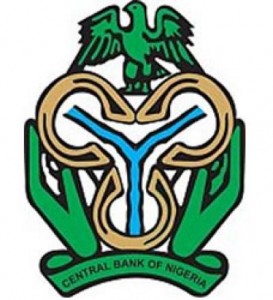You could, listening to the CBN’s rate-setting committee (the MPC released its latest communiqué on Monday evening, after meeting all day), believe that a less accommodative monetary policy stance over the last one year has helped moderate domestic inflation. Or one could do a deeper take on the economy. Manufacturing has long since gone out of fashion. Government (and the fiscal leakages associated with it) remains the major economic activity. In spite of a resurgence in the service sector in the early part of the decade, the output gap (the difference between potential and actual GDP) trends up relentlessly. And unemployment is real and growing. Inevitably, final domestic demand suffers. As demand goes, so prices!
Still, even the MPC admits that the inflation numbers are not as straight in the story they the “year-on-year headline inflation rate decreased from 9.4% in July 2011 to 9.3% in August and core inflation decelerated from 11.5% to 10.9% during the same period. However, food inflation rose to 8.7% in August 2011, from 7.9% in July”.
In the light of all these, why did the MPC plump for a 50 basis point rate hike?
Three reasons.
The fiscal side of the local equation is not getting better. The expansionary effect of the minimum wage is but one reason. Add to this the chance that the states may go to court to challenge the constitutionality of the sovereign wealth fund, and even the likelihood of the promised consolidation over the medium-term fades away rapidly.
Then there are those developments that should push costs up, especially the tariff increases that are a key part of government’s response to its fiscal challenges; and the ones that would, by increasing system liquidity, ratchet up demand. Amongst the latter are the infusions of funds into the system from the activity of the CBN’s “bad bank” (AMCON is expected to inject N3 trillion into the banking system as part of the processing of rehabilitating ailing institutions in the sector).
Finally, there’s the exchange rate of the naira. The MPC describes the modest depreciation that the currency has experienced over the last 3 quarters in roseate terms. Still, the flip-side of this “gain”, is the cost to the nation from the apex bank’s massive intervention in the currency markets in support of the naira. Part of the difficulty with managing the naira’s exchange rate is that such management on its own constrains the economy’s ability to respond flexibly to inflation shocks. In the absence of such “management”, according to the IMF (WEO, September, 2011), “Monetary tightening aimed at stabilising inflation will tend to appreciate the nominal exchange rate. Although this may help reduce domestic cost pressures, it will also tend to further appreciate the real exchange rate, decreasing competitiveness and dampening output beyond the deterioration in the country’s terms of trade”.
Now, by increasing its overnight rate, the CBN also expects to drive up domestic borrowing costs. (Actually, the MPC’s communiqué, released late evening yesterday bemoans the adverse effect of rising costs on other sectors of the economy.) If a sizeable number of the bids for foreign currencies on the official market are funded by borrowed funds, then we should see a drop in demand, as the cost of funding the associated bids go up. However, the more interesting index is the widening gap between official market rates and rates in the parallel market. Besides the arbitrage opportunity created by this divergence, there is the fact that under a managed exchange rate regime, the unofficial rates often are better proxies of the true price of the domestic currency.
A slight diversion.
In an economy, where the criminal justice system is skewed in favour of the filthy and the rich, what is the (opportunity) cost of direct access to the public purse? I suspect the answer here is, zilch, nothing.
To the original argument.
Now, if the major source of demand for foreign currency in the parallel market is from public office holders desirous of secreting their loot out of the country, might the MPC’s decision to raise the policy rate have any effect on over the counter rates here? Remember, we’ve already established that the “borrowing cost” for this category of market makers is zero.
So, how much of an effect would the MPC’s decision have on the stability of domestic prices?
A better question: “Given the tribulations of the domestic banking sector, how effective a tool is the overnight interest rate for communicating monetary policy intentions?”
